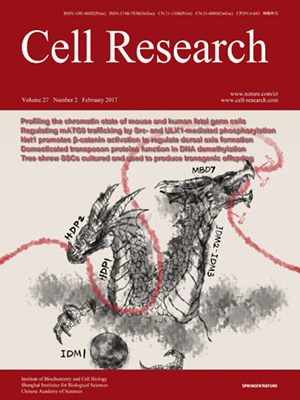
Volume 27, No 2, Feb 2017
ISSN: 1001-0602
EISSN: 1748-7838 2018
impact factor 17.848*
(Clarivate Analytics, 2019)
Volume 27 Issue 2, February 2017: 202-225
ORIGINAL ARTICLES
The guanine nucleotide exchange factor Net1 facilitates the specification of dorsal cell fates in zebrafish embryos by promoting maternal β-catenin activation
Shi Wei1, Miaomiao Dai1, Zhaoting Liu1, Yuanqing Ma1, Hanqiao Shang1, Yu Cao1 and Qiang Wang1,2
1State Key Laboratory of Membrane Biology, CAS Center for Excellence in Molecular Cell Science, Institute of Zoology, Chinese Academy of Sciences, Beijing 100101, China
2Savaid Medical School, University of Chinese Academy of Sciences, Beijing 100049, China
Correspondence: Qiang Wang, Tel: +86-10-6480-7895; Fax: +86-10-6480-7895(qiangwang@ioz.ac.cn)
Wnt/β-catenin signaling is essential for the initiation of dorsal-ventral patterning during vertebrate embryogenesis. Maternal β-catenin accumulates in dorsal marginal nuclei during cleavage stages, but its critical target genes essential for dorsalization are silent until mid-blastula transition (MBT). Here, we find that zebrafish net1, a guanine nucleotide exchange factor, is specifically expressed in dorsal marginal blastomeres after MBT, and acts as a zygotic factor to promote the specification of dorsal cell fates. Loss- and gain-of-function experiments show that the GEF activity of Net1 is required for the activation of Wnt/β-catenin signaling in zebrafish embryos and mammalian cells. Net1 dissociates and activates PAK1 dimers, and PAK1 kinase activation causes phosphorylation of S675 of β-catenin after MBT, which ultimately leads to the transcription of downstream target genes. In summary, our results reveal that Net1-regulated β-catenin activation plays a crucial role in the dorsal axis formation during zebrafish development.
10.1038/cr.2016.141
FULL TEXT | PDF
Browse 1669


